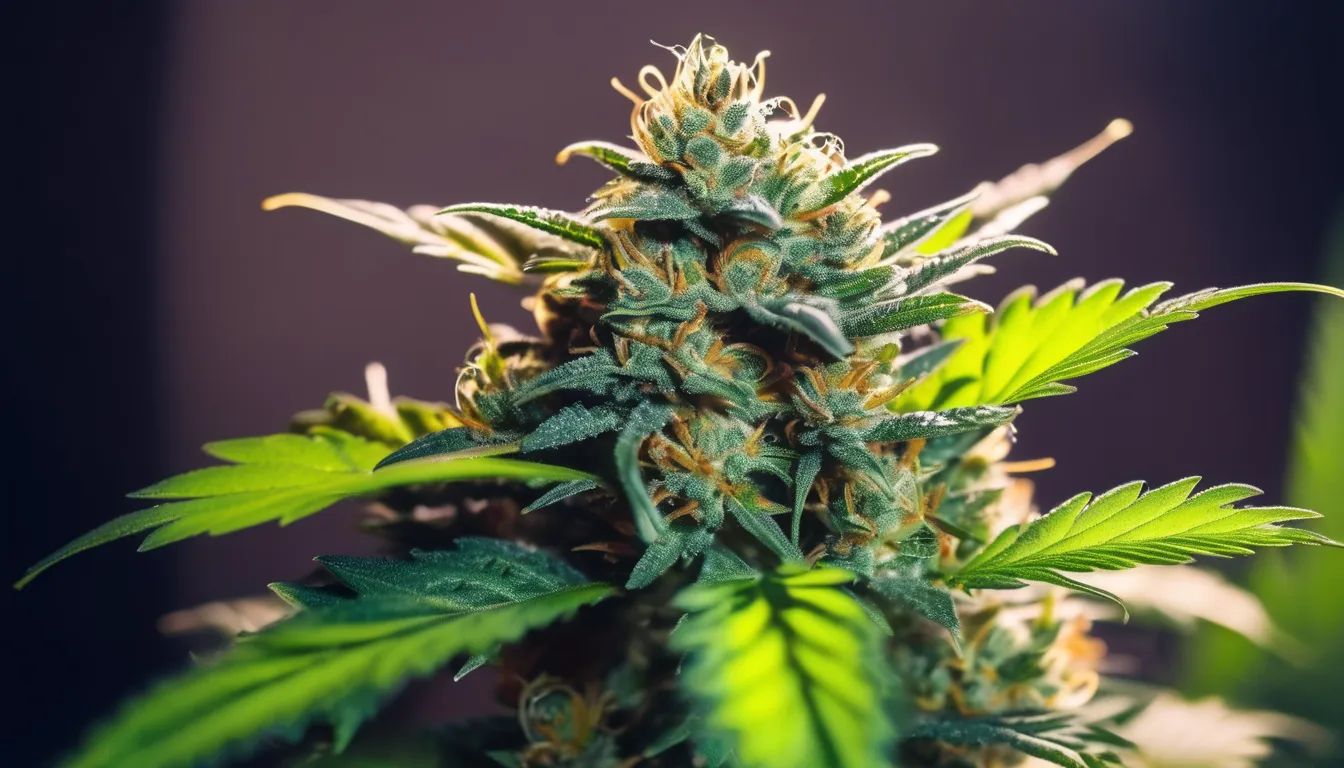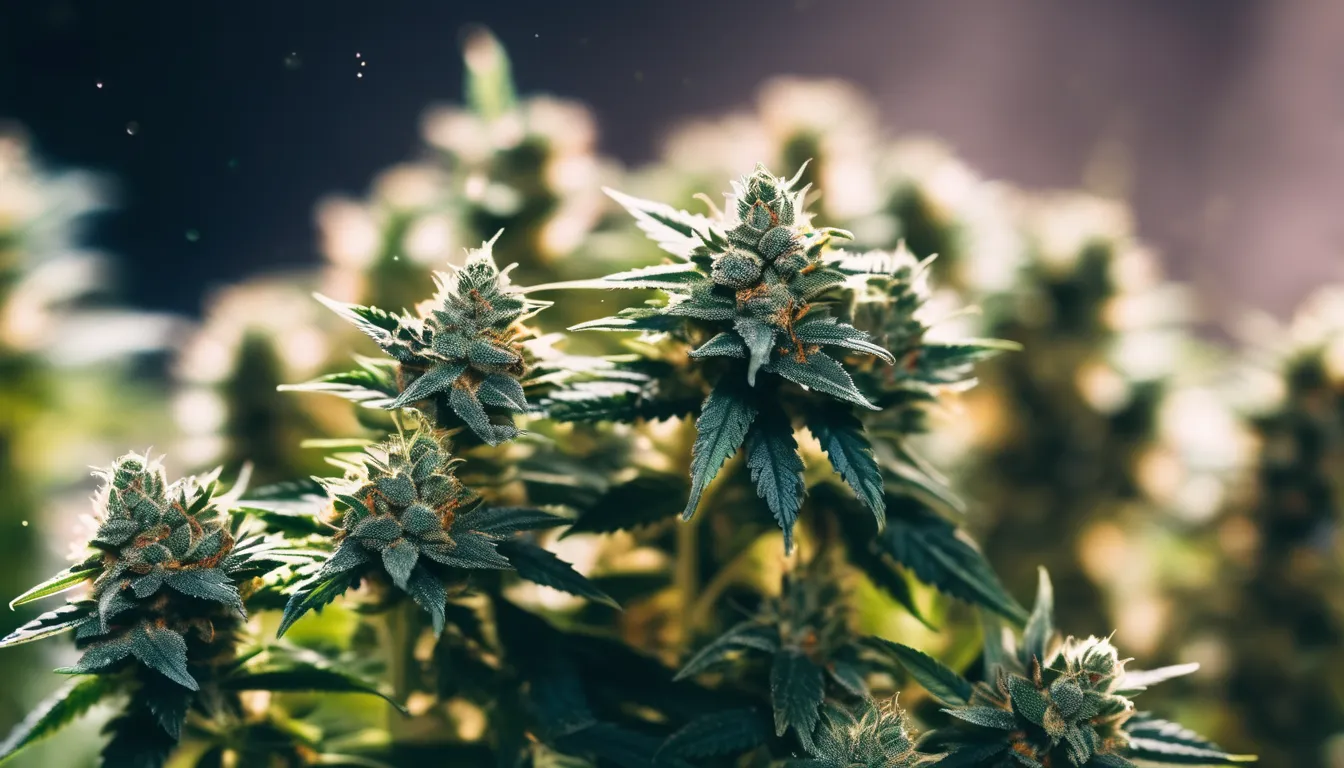Key Takeaways
- High-quality cannabis features vibrant colors, dense trichome coverage, and a firm bud structure.
- A potent, pleasant aroma and distinct flavors indicate well-preserved terpenes and cannabinoids.
- Understanding quality indicators and legal requirements enhances safety and the overall experience.
In the ever-evolving world of cannabis culture and consumption, discerning the quality of weed is not just about preference but essential for ensuring the best experience and safety.
As legal markets expand and options proliferate, understanding what constitutes “good weed” becomes crucial for both novice and seasoned consumers. This article aims to demystify the qualities that define premium cannabis, setting clear, science-based criteria for evaluation.
By examining aspects from appearance and aroma to genetic and cultivation practices, we will explore how to identify truly high-quality cannabis that promises both potent effects and pure enjoyment.

Key Factors Influencing Cannabis Quality
The quality of cannabis is influenced by a myriad of factors that span its lifecycle from seed to shelf. Understanding these elements is key to recognizing superior products [1]. Here are some pivotal aspects to consider:
- Genetics: The role of strain and origin in determining the inherent characteristics of cannabis.
- Cultivation: How growing conditions, including climate and soil type, affect the plant’s development and the quality of its yield.
- Harvesting: The impact of timing and methods used in harvesting on the potency and profile of cannabinoids.
- Curing and Storage: Practices that either preserve the desirable qualities or lead to degradation of the cannabis post-harvest.
Visual Indicators of Good Weed
Appearance
Color: Typical Colors of High-Quality Strains
The color of cannabis flowers can serve as a primary indicator of its quality. High-quality strains typically exhibit vibrant hues ranging from deep greens to bright purples, with the richness and uniformity of color often signifying a healthy growth and maturation process.
Pale or unevenly colored leaves, on the other hand, might indicate deficiencies or poor growing conditions.
Trichome Density: What It Indicates About Potency and Ripeness
Trichomes are tiny, crystal-like structures that coat the surface of premium cannabis buds. These structures are not just decorative; they are rich in cannabinoids and terpenes, which are essential for the potency and aroma of the weed.
A dense covering of trichomes often suggests a high potency and optimal ripeness, making trichome visibility a critical quality metric.
Structure: Bud Density and Shape
The structure of a cannabis bud tells much about its cultivation care and handling post-harvest. Well-cultivated cannabis tends to have tight, dense high quality buds, indicating that the plant received ample light and was harvested at the right time.
Fluffy or overly airy buds might suggest suboptimal growing conditions or early harvesting, which can affect both the effects and the burning qualities of the weed.
What to Avoid
Signs of Poor Weed Quality: Discoloration, Mold, and Pests
When evaluating cannabis, it is crucial to be aware of indicators that signify low-quality weed, which can detract from the experience and pose health risks. Discoloration, such as brown or yellow leaves, often points to nutrient deficiencies, improper drying, or aging products.
Mold, visible as white, powdery spots or a musty smell, is a serious concern for bad weed, as it not only compromises the weed’s effects but also poses significant health risks, especially for immunocompromised individuals.
Additionally, the presence of pests, indicated by small holes in the leaves or visible bugs, suggests poor cultivation practices and can lead to a decrease in the overall quality and safety of the cannabis plants.
Being vigilant about these signs can guide consumers in avoiding substandard products and ensuring a safe and enjoyable experience.
Aroma and Flavor Profiles
Aroma
The aroma of a cannabis flower is a critical indicator of its quality and freshness. Healthy cannabis emits a strong and distinct scent, which varies from earthy and piney to citrusy, depending on the strain.
These aromas, produced by terpenes, not only define the flavor but also suggest the therapeutic potency of the flower. A vibrant and pungent aroma signifies a well-preserved terpene profile, indicative of proper curing and storage, whereas a musty or muted scent can suggest degradation or poor handling.
Therefore, the aroma of cannabis provides essential clues about its overall quality and freshness, aiding consumers in their selection process.
Flavor
The flavor profile of cannabis is deeply intertwined with its quality and is closely linked to its aroma, providing a sensory confirmation of its excellence. Distinct flavors such as fruity, spicy, or earthy notes usually indicate high-quality cannabis, preserved through careful cultivation and curing.
The relationship between aroma and taste in premium cannabis is symbiotic; a rich aroma often predicts a complex and satisfying flavor, both deriving from a robust terpene profile. This harmony enhances the user experience and confirms the cannabis’s freshness and potency.
Tactile Assessment
Texture
The texture of cannabis is a vital tactile indicator of its quality. Proper dryness and stickiness levels can tell much about the bud’s handling and curing process.
A bud that is neither overly dry nor excessively sticky generally signifies optimal curing, preserving both the cannabinoids and the terpenes effectively. The feel of the bud, from its firmness to its resilience, when lightly pressed, provides insights into its cultivation quality and freshness.
Thus, the tactile properties of cannabis not only reflect its physical appeal but also its potential for providing a potent and enjoyable experience.
Trim
The trim of a cannabis bud significantly impacts its quality assessment. Proper trimming removes excess leaves and stems, highlighting the dense, trichome-rich areas that are potent and flavorful.
Well-trimmed weed appears neat and compact, with minimal leaf material, enhancing both visual appeal and smoking experience by reducing harshness and increasing active compounds. Thus, meticulous trimming indicates careful cultivation and processing, reflecting overall quality.
Potency and Effects of Cannabis

Understanding THC and CBD Levels
The potency of cannabis, primarily determined by THC and CBD levels, is a crucial indicator of its quality. Higher potency levels often reflect advanced cultivation techniques and genetic quality, which are aimed at maximizing the concentration of these cannabinoids.
However, true quality is not measured by potency alone but also by the balance of cannabinoids and terpenes. This balance influences not only the therapeutic effects but also the overall sensory experience, offering a more nuanced and desirable outcome.
A well-balanced profile suggests a sophisticated approach to cultivation and processing, where both the psychoactive and sensory attributes of the cannabis are finely tuned to achieve optimal effects.
Expected Effects of Good Quality Weed
High-quality cannabis is characterized not only by its potency but also by the predictability and desirability of its effects.
Consumers can expect a clear, enjoyable experience that enhances well-being without overwhelming side effects, which is a hallmark of well-cultivated and processed strains.
Additionally, the variability of effects among different strains highlights the importance of selecting the right type for individual preferences and needs. Indica strains might offer relaxation and sedative effects, while sativas tend to energize and stimulate.
This variability means that the quality of the experience depends not just on the general quality of the cannabis but also on its suitability for specific uses, emphasizing the significance of understanding strain-specific characteristics.
Safety and Legality of High-Quality Cannabis
Legal Considerations
The safety and legality of purchasing cannabis are paramount, underscoring the importance of obtaining products from licensed retailers.
These authorized entities ensure that cannabis meets health and safety standards set by regulatory bodies, significantly reducing the risks associated with contaminated or illicitly produced products.
Moreover, the legal landscape for cannabis varies widely between states, necessitating a thorough understanding of local regulations.
Compliance with state-specific laws not only avoids legal repercussions but also supports a regulated market that promotes safety, quality, and responsible consumption.
This careful consideration of legal aspects reinforces the importance of informed purchasing decisions within the legal framework of cannabis use.
Health Implications
Choosing high-quality cannabis is crucial for maximizing health benefits and minimizing risks.
High-quality weed is typically produced under stringent conditions that ensure safety from pesticides, molds, and other contaminants, offering users the full therapeutic benefits of cannabinoids and terpenes without harmful side effects.
On the other hand, low-quality cannabis may contain harmful chemicals or microbes that can pose serious health risks, including respiratory problems and immune system complications.
Therefore, ensuring the quality of cannabis not only enhances the efficacy of its desired effects but also protects against potential adverse health impacts associated with poorly produced products.
Conclusion
In our exploration of what defines “good weed,” we’ve highlighted key quality indicators, from visual attributes like color and trichome density to subtler aspects like aroma and flavor.
Understanding these signs enables consumers to identify high-quality cannabis that ensures potent effects and a pleasurable experience. Additionally, we underscored the importance of legal and health considerations in purchasing cannabis.
Educated consumption is vital for personal safety and for supporting the responsible growth of the legal cannabis industry. By being informed, consumers can make choices that enhance their well-being and promote a sustainable market.
Sources –
